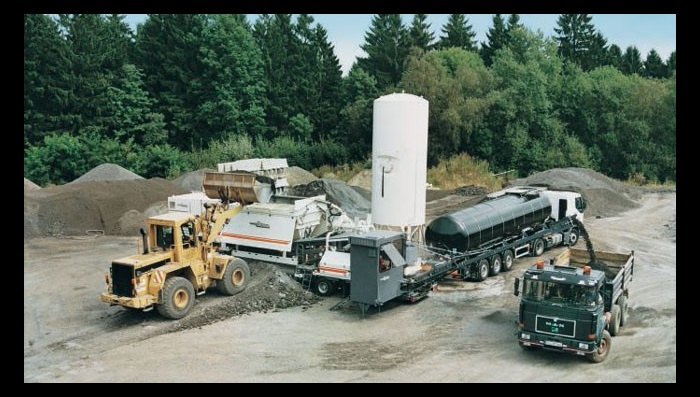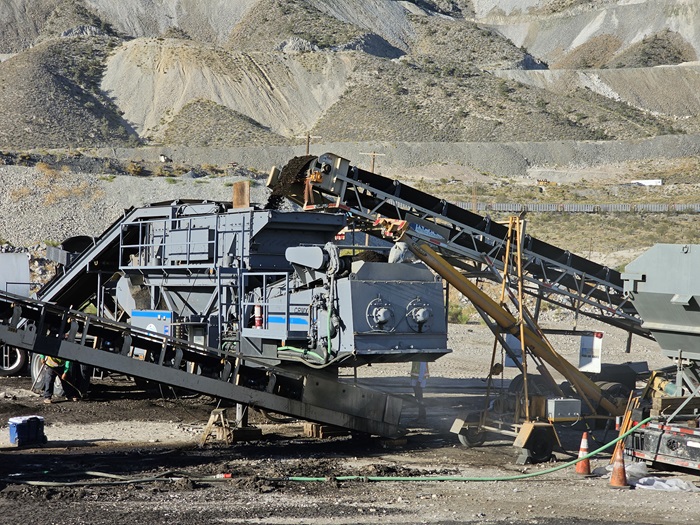Cold Central Plant Recycling (CCPR)
A preventive maintenance or rehabilitation process where materials are milled to the required depth, transported to a nearby cold central plant, processed, transported back to the road, and then laid with a paver. This process can be used for both partial- and full-depth recycling, as well as new construction with recycled materials. Multiple layers can be placed. Stabilization of the underlying layers and/or subgrade can be included as part of the rehabilitation process to increase structural capacity without increasing grade height.

Figure 1. Cold Central Plant Recycling

Figure 2. Cold Central Plant Recycling on San Bernardino Route 18
CCPR is used when precise process control is required. It may also be required when RAP from other stockpiles or projects are incorporated, or if there is not enough space on the jobsite to process recycled material.
CCPR construction process consists of:
- Cold planing existing materials
- Mixing processed RAP and/or aggregate base with foamed asphalt or emulsion, cement, and water using one or more feeders, conveyors, a mixing chamber or pugmill, and related stationary equipment
- Placing, spreading and compacting the mixture
- Applying asphaltic emulsion and sand cover
- Overlaying the recycled surface with a new layer of hot mix asphalt (HMA)
As with conventional HMA strategies, a proper site investigation is required to ensure good structural and mix design.
Mix Design
The general mix design procedure for CCPR is as follows:
- Obtain samples of recycled asphalt pavement (RAP) material from the field
- Process the RAP Determine the properties of the RAP such as the binder content and gradation
- If required, select additional virgin aggregate to be incorporated into recycled material
- If required, select additional recycling additive, such as small percentages of cement for early opening strength
- Prepare and test specimens to determine the type and amount of stabilizing agents and additives to be incorporated into the mix
- Establish job mix formula
- Adjust in field, if required
The following link is the California Test Method 316 (CT 316) for Cold Central Plant mix designs:
Implementation
In 2022, a Pavement and Materials Partnering Committee working group made available CCPR non-standard specifications (NSSP). The specifications are currently available for pilot projects, upon approval from the Office of Asphalt Pavements.
The following CCPR pilot projects are planned:
- EA 08-1H491 - San Bernardino - Route 18
- EA 06-1E610 - Tulare - Route 63
- EA 06-0U460 - Kings - Route 41
- EA 02-4J900 - Siskiyou - Route 161

